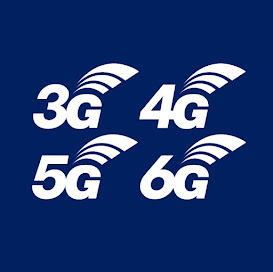
The mobile phone company Nokia is being hit by a growing economic boycott in Iran as consumers sympathetic to the post-election protest movement begin targeting a string of companies deemed to be collaborating with the regime.
Wholesale vendors in the capital report that demand for Nokia handsets has fallen by as much as half in the wake of calls to boycott Nokia Siemens Networks (NSN) for selling communications monitoring systems to Iran.
There are signs that the boycott is spreading: consumers are shunning SMS messaging in protest at the perceived complicity with the regime by the state telecoms company, TCI. Iran's state-run broadcaster has been hit by a collapse in advertising as companies fear being blacklisted in a Facebook petition. There is also anecdotal evidence that people are moving money out of state banks and into private banks.
Nokia is the most prominent western company to suffer from its dealings with the Iranian authorities. Its NSN joint venture with Siemens provided Iran with a monitoring system as it expanded a mobile network last year. NSN says the technology is standard issue to dozens of countries, but protesters believe the company could have provided the network without the monitoring function.
Siemens is also accused of providing Iran with an internet filtering system called Webwasher.

"Iranians' first choice has been Nokia cellphones for several years, partly because Nokia has installed the facility in the country. But in the past weeks, customers' priority has changed," said Reza, a mobile phone seller in Tehran's Big Bazaar.
"Since the news spread that NSN had sold electronic surveillance systems to the Iranian government, people have decided to buy other company's products although they know that Nokia cellphones function better with network coverage in Iran."
Some Tehran shops have removed Nokia phones from their window displays. Hashem, another mobile phone vendor, said: "I don't like to lose my customers and now people don't feel happy seeing Nokia's products. We even had customers who wanted to refund their new Nokia cellphones or change them with just another cellphone from any other companies.
"It's not just a limited case to my shop – I'm also a wholesaler to small shops in provincial markets, and I can say that there is half the demand for Nokia's product these days in comparison with just one month ago, and it's really unprecedented. People feel ashamed of having Nokia cellphones," he added.
News of the boycott has appeared on the front page of Iranian pro-reform papers such as Etemad-e Melli, owned by the reformist candidate Mehdi Karroubi. Hadi Heidari, a prominent Iranian cartoonist, has published an image of a Nokia phone on a No Entry traffic sign.
A Nokia spokeswoman refused to comment on the company's sales in Iran.

The Iranian authorities are believed to have used Nokia's mobile phone monitoring system to target dissidents. Released prisoners have revealed that the authorities were keeping them in custody on the basis of their SMS and phone calls archive, which was at officials' disposal.
One Iranian journalist who has just been released from detention said: "I always had this impression that monitoring calls is just a rumour for threatening us from continuing our job properly, but the nightmare became real when they had my phone calls – conversations in my case.
"And the most unbelievable thing for me is that Nokia sold this system to our government. It would be a reasonable excuse for Nokia if they had sold the monitoring technology to a democratic country for controlling child abuse or other uses, but selling it to the Iranian government with a very clear background of human rights violence and suppression of dissent, it's just inexcusable for me. I'd like to tell Nokia that I'm tortured because they had sold this damn technology to our government."
NSN spokesman Ben Roome said: "As in every other country, telecoms networks in Iran require the capability to lawfully intercept voice calls. In the last two years, the number of mobile subscribers in Iran has grown from 12 million to over 53 million, so to expand the network in the second half of 2008 we were required to provide the facility to intercept voice calls on this network."
The SMS boycott, meanwhile, has apparently forced TCI into drastic price hikes. The cost of an SMS has doubled in recent days. Protesters view the move as a victory.









